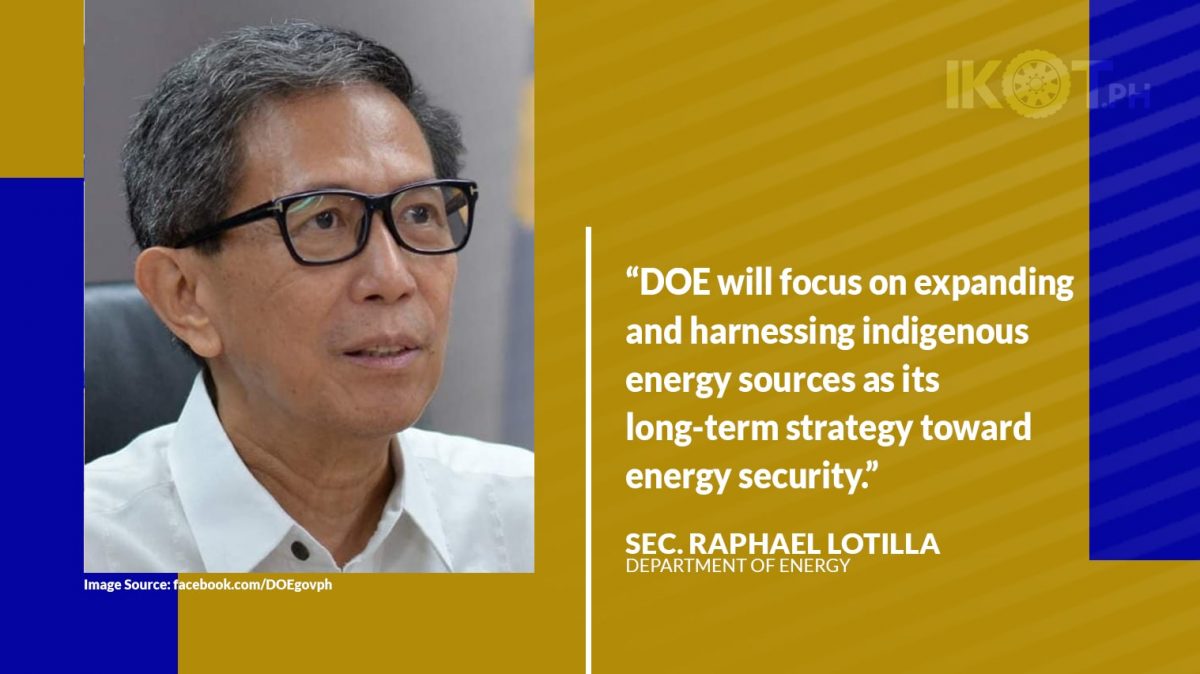Department of Energy (DOE) Secretary Raphael Lotilla said the agency will focus on expanding and harnessing indigenous energy sources as its long-term strategy toward energy security.
In a virtual press conference, Lotilla said the country remains dependent on imported energy supplies, particularly coal and oil.
“The country remains dependent on imported energy supplies, particularly coal and oil.”
He said the Philippines’ primary energy supply in 2021 was 56.8 percent imported and 43.2 percent indigenous.
Indigenous sources include geothermal, natural gas, hydro, and other renewable energy sources like solar.
Of the imported energy supply, coal accounts for 37.1 percent, of which 98 percent is sourced from Indonesia.
Oil, on the other hand, accounts for 34.6 percent of the energy supply. It also accounts for 89 percent of power sources in off-grid areas.
Lotilla said this makes the country “energy insecure” amid the increase in fuel prices and uncertain supply of coal as exporting countries can implement a coal export ban.
“Exploring and harnessing indigenous energy sources will help the DOE to achieve its energy goals presented to President Ferdinand Marcos Jr.
He added exploring and harnessing indigenous energy sources will help the DOE to achieve its energy goals presented to President Ferdinand Marcos Jr.
The DOE aims for the country to have energy security, accessible and affordable energy, and transition to a sustainable low-carbon future.
“(T)he longer-term solution, however, is to move from —again the President says— from over-dependence on imported sources and to go for more indigenous sources,” Lotilla said.
He said the government does not have to look as far as the West Philippine Sea to find indigenous energy sources, but it can start and focus on undisputed areas.
“We are also looking at areas that are clearly undisputed and areas near Malampaya,” he added.


